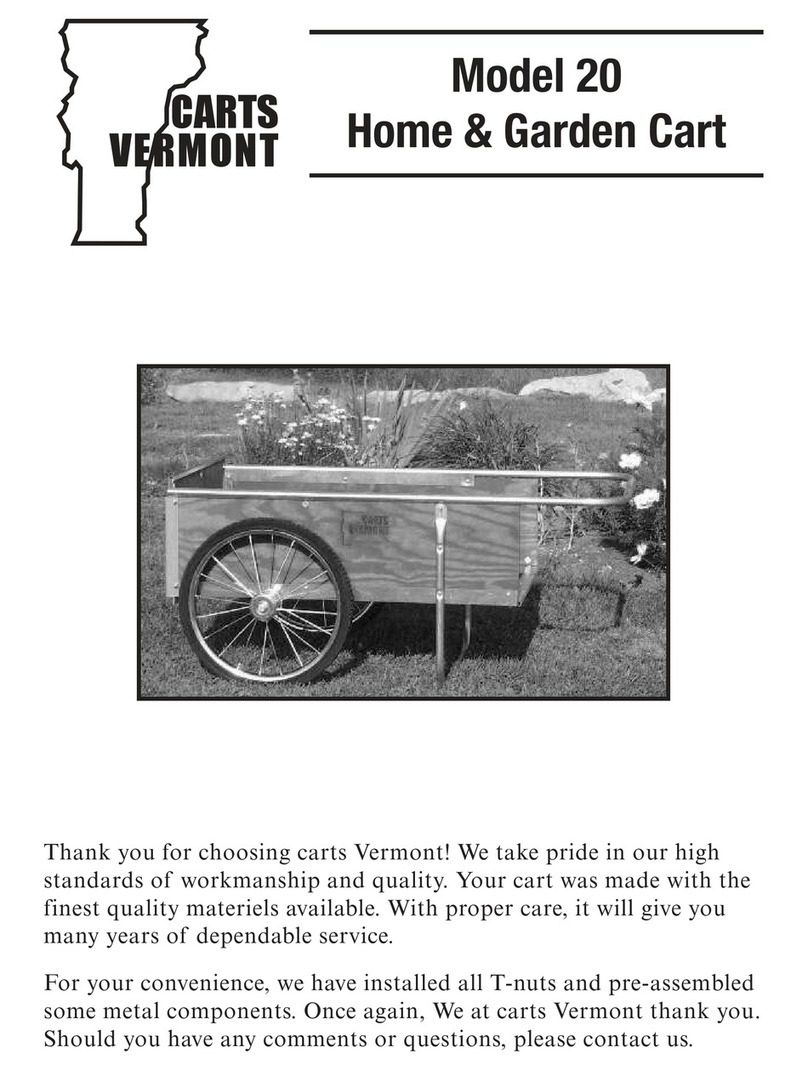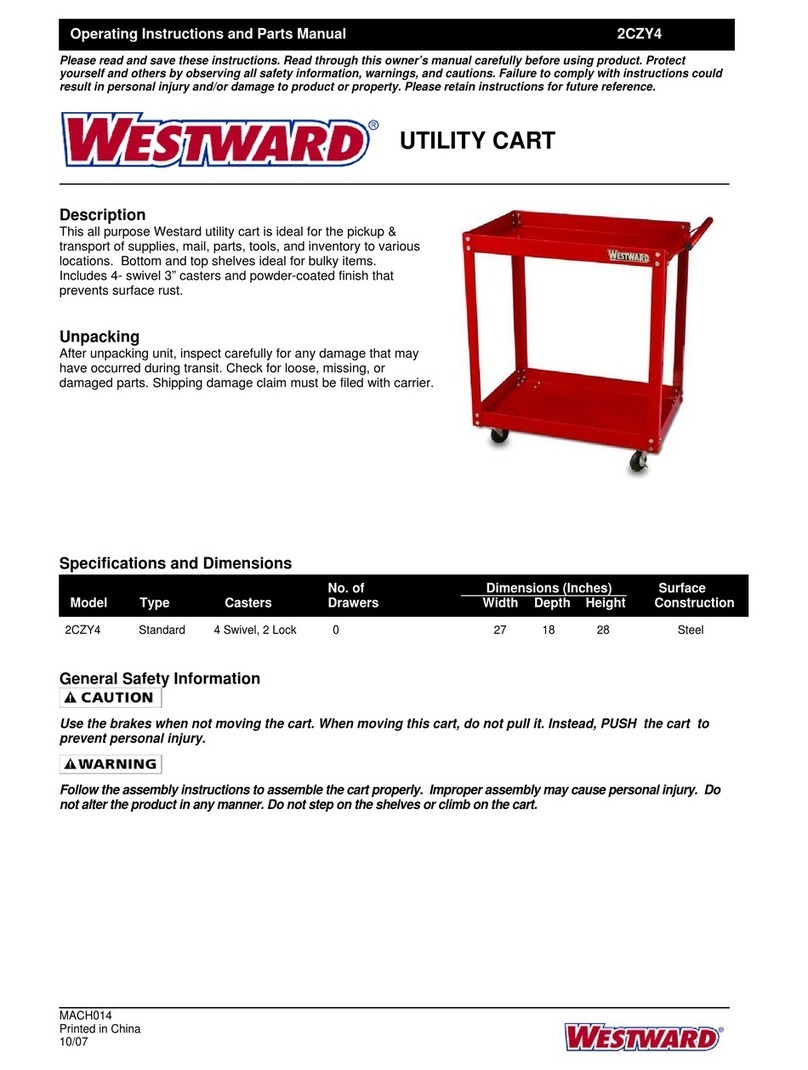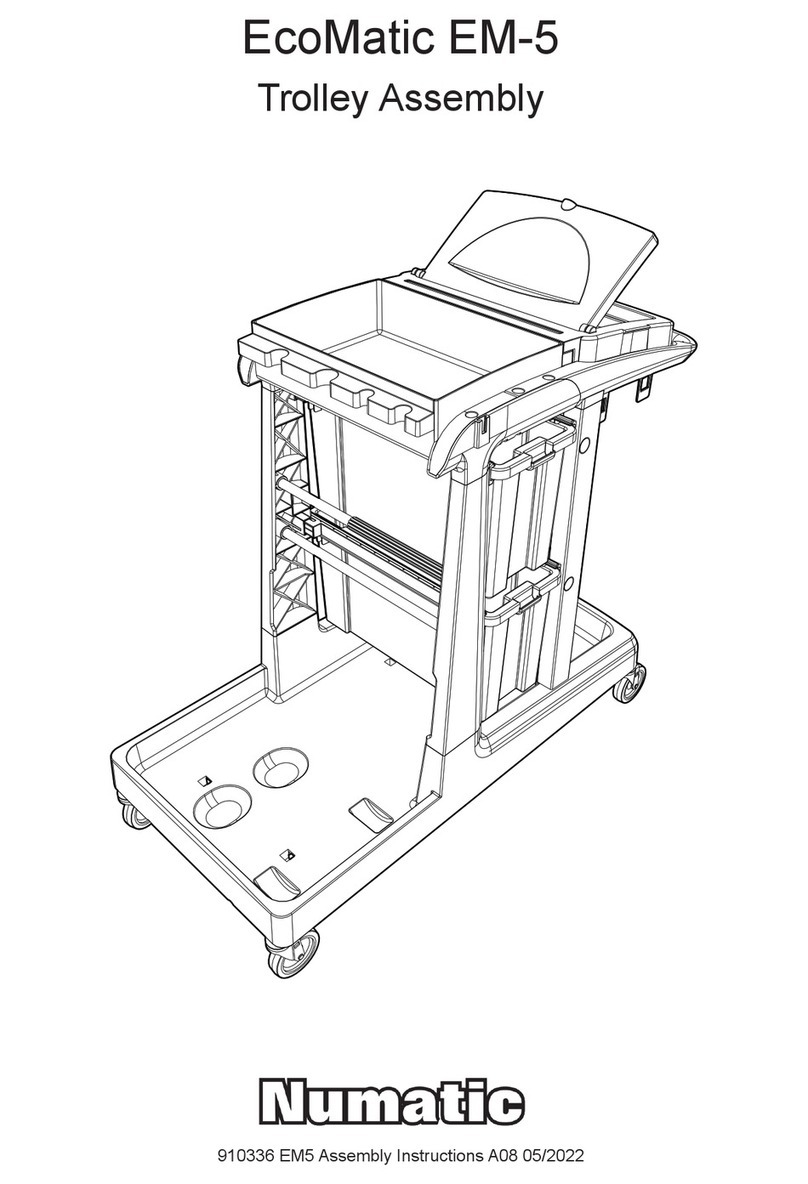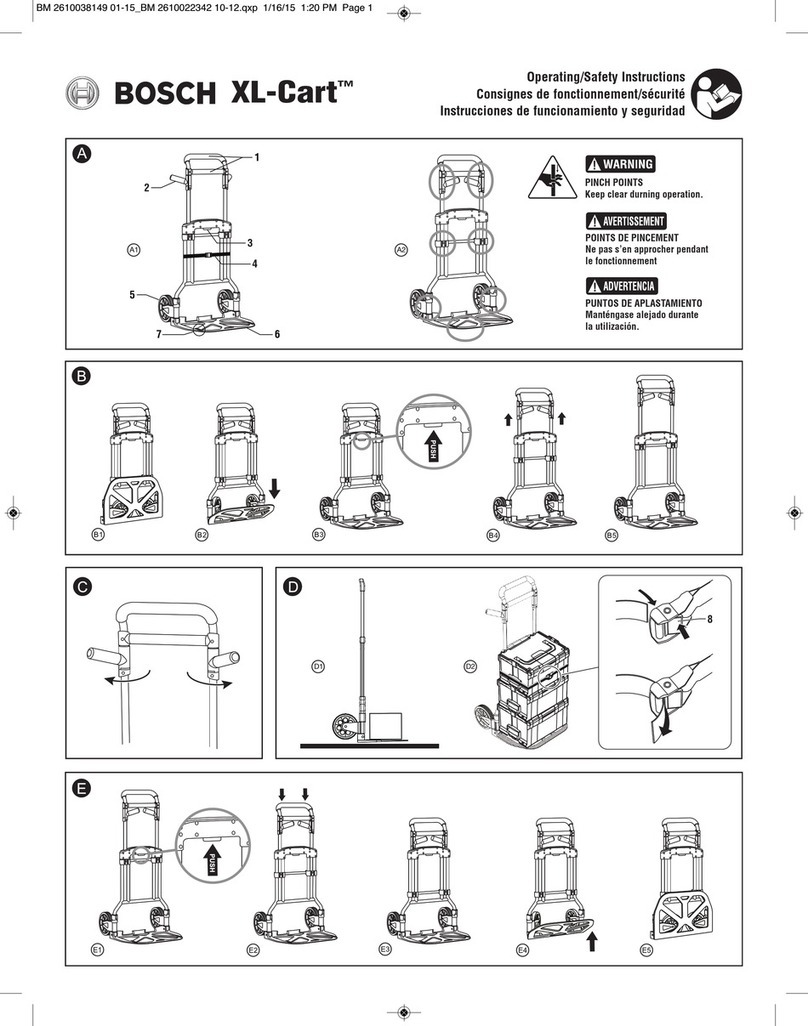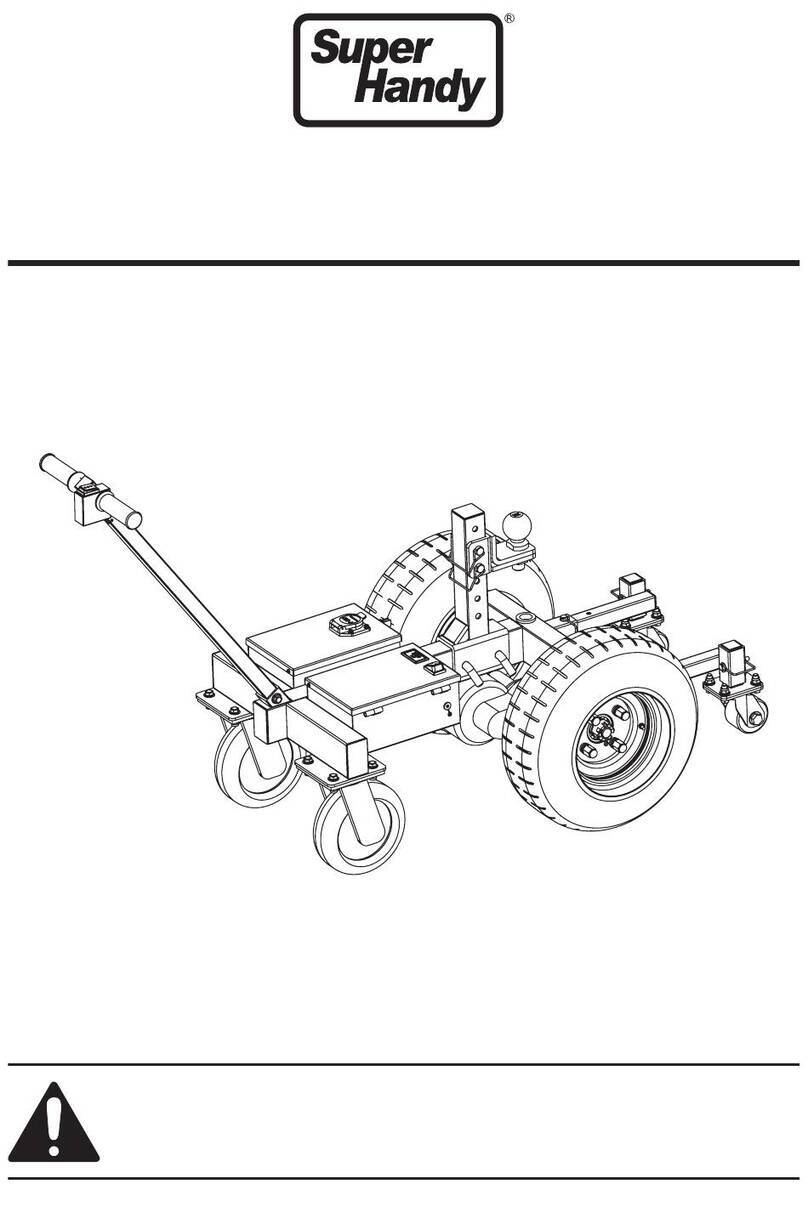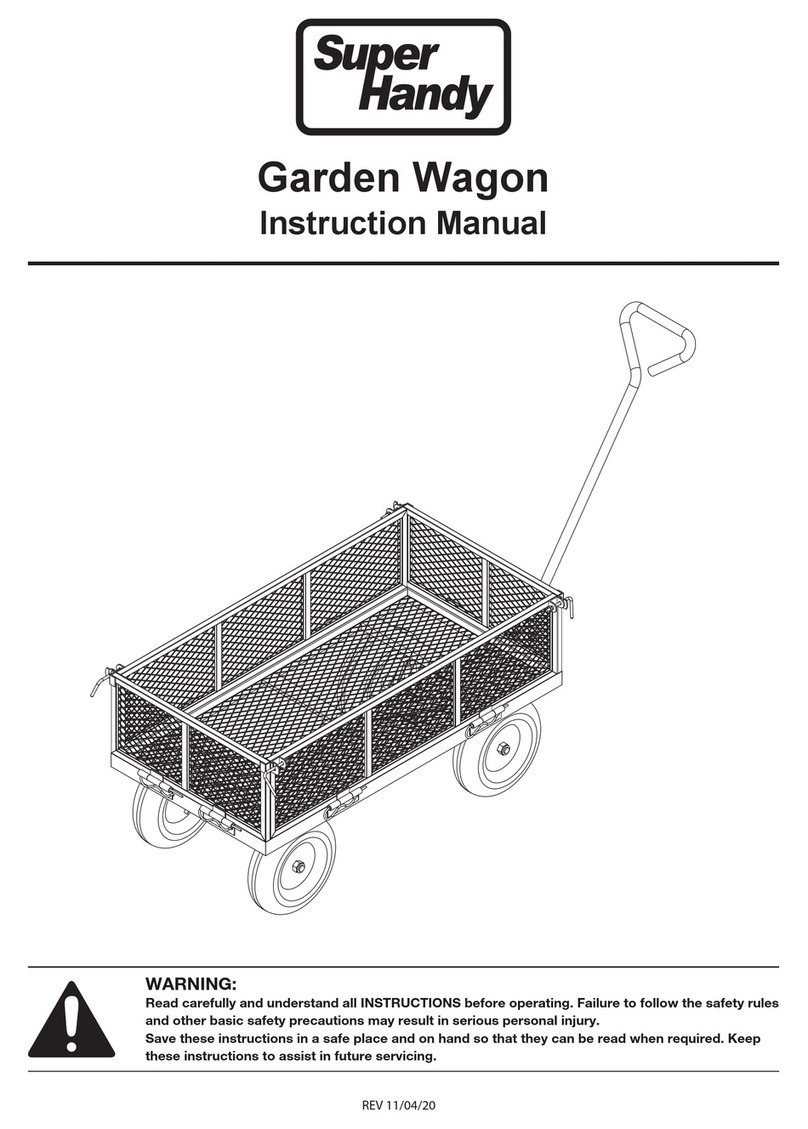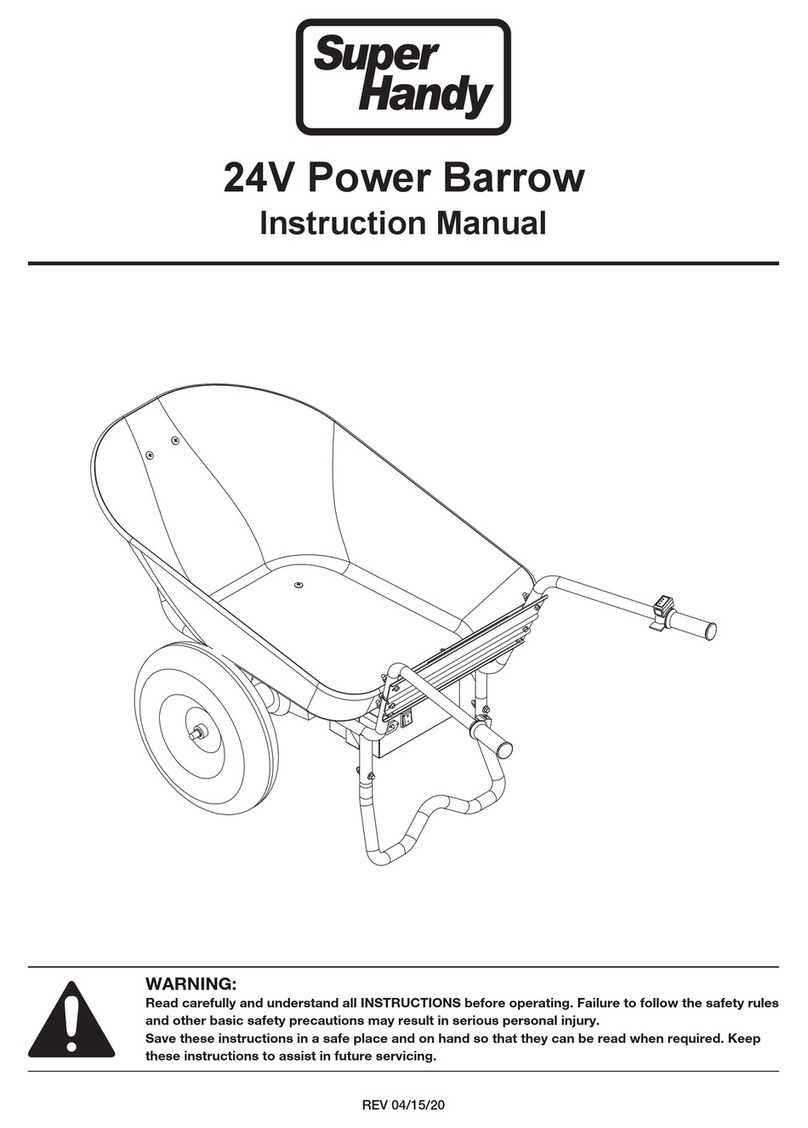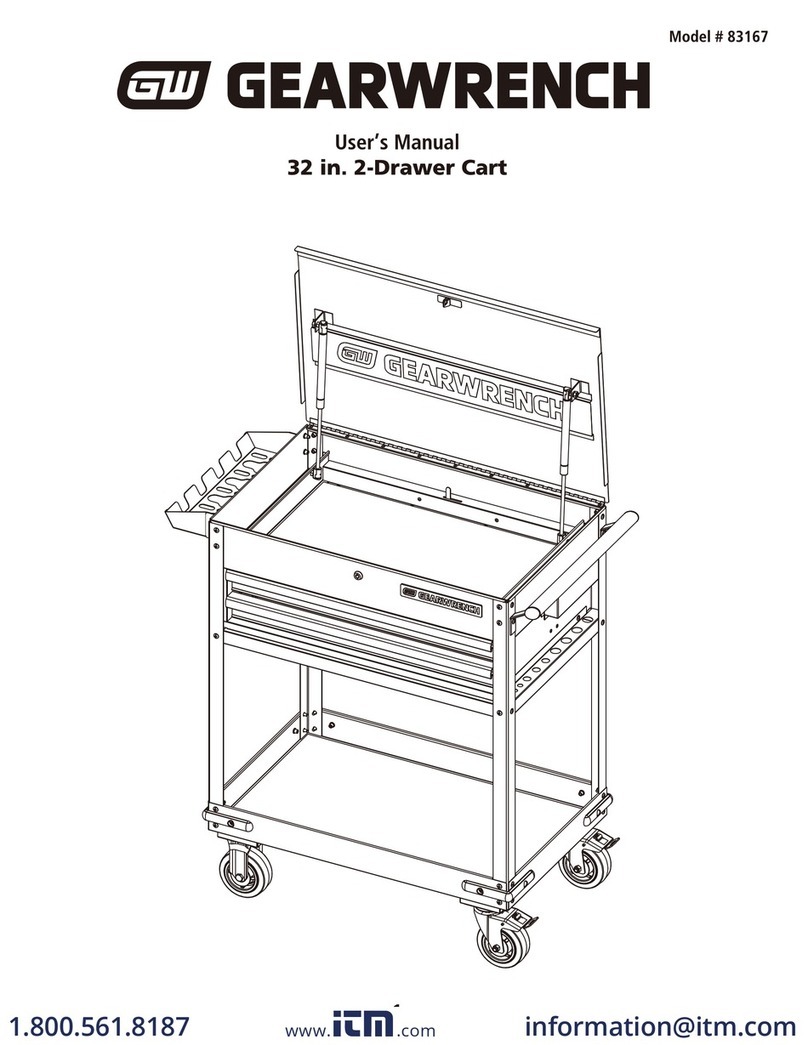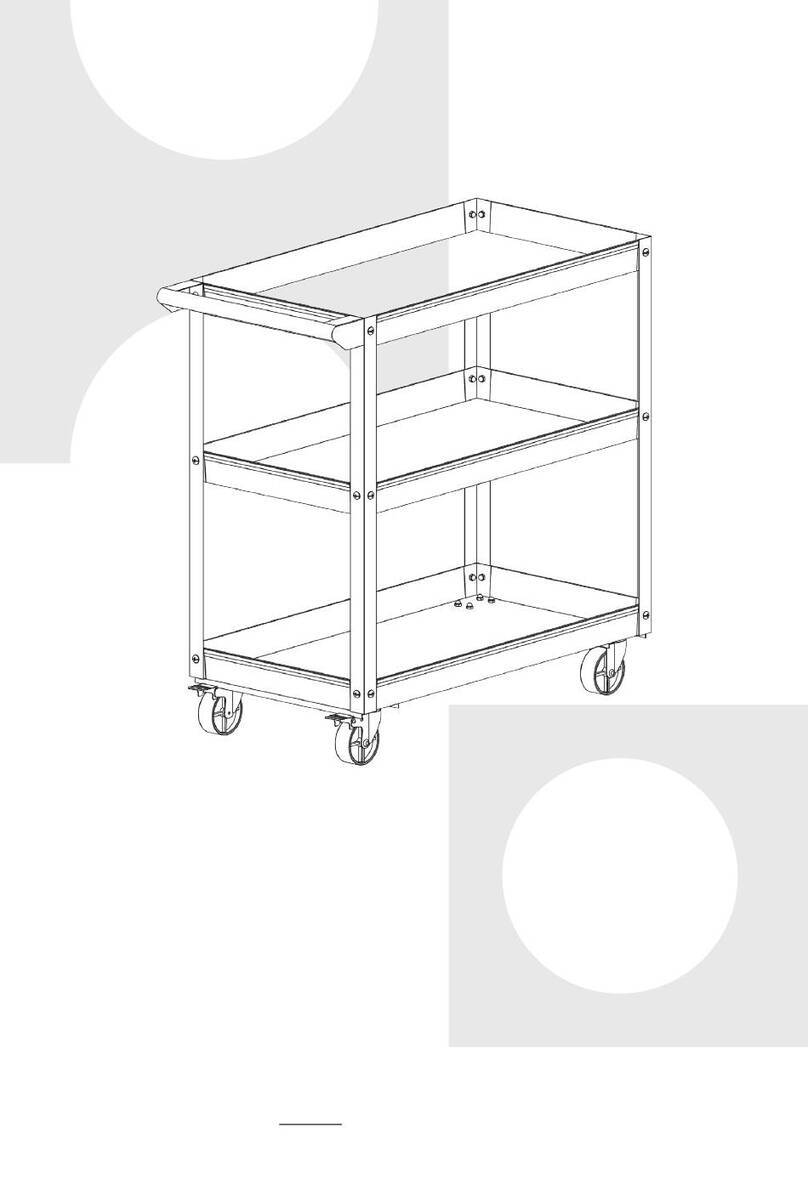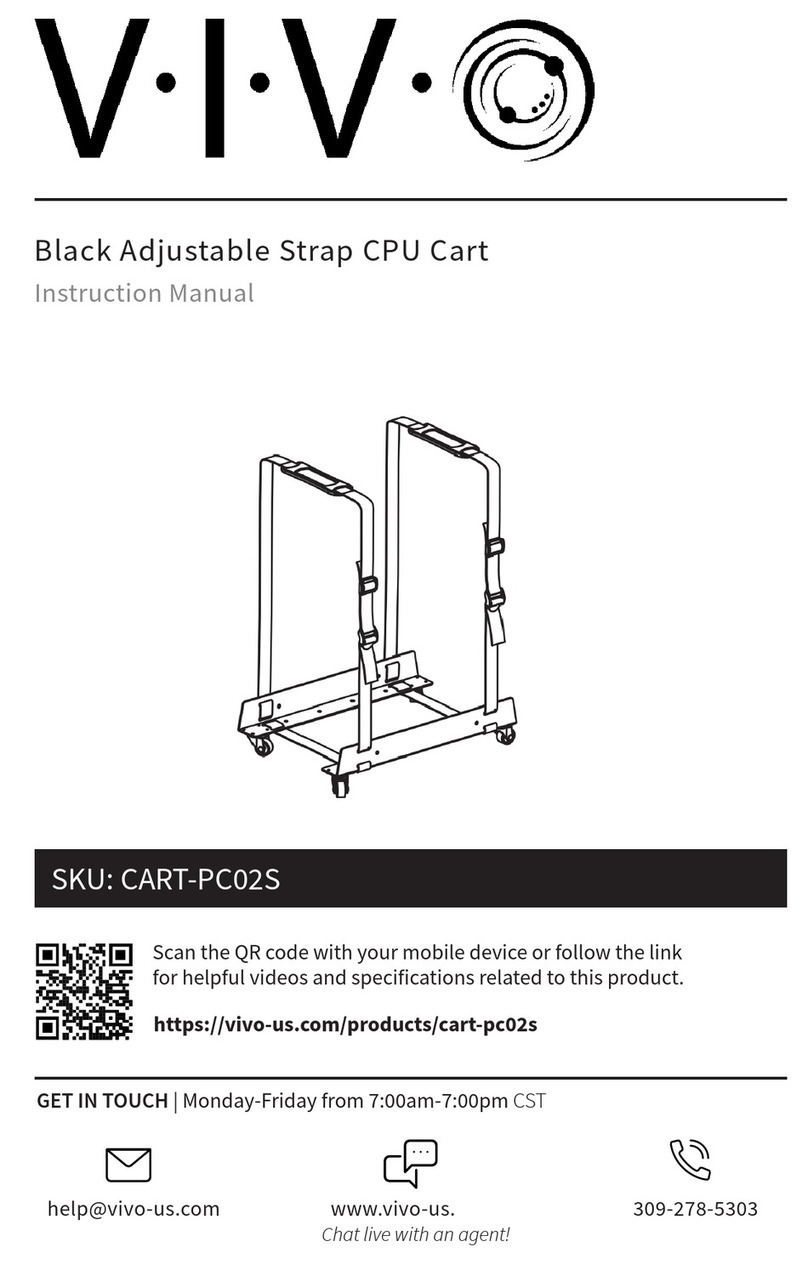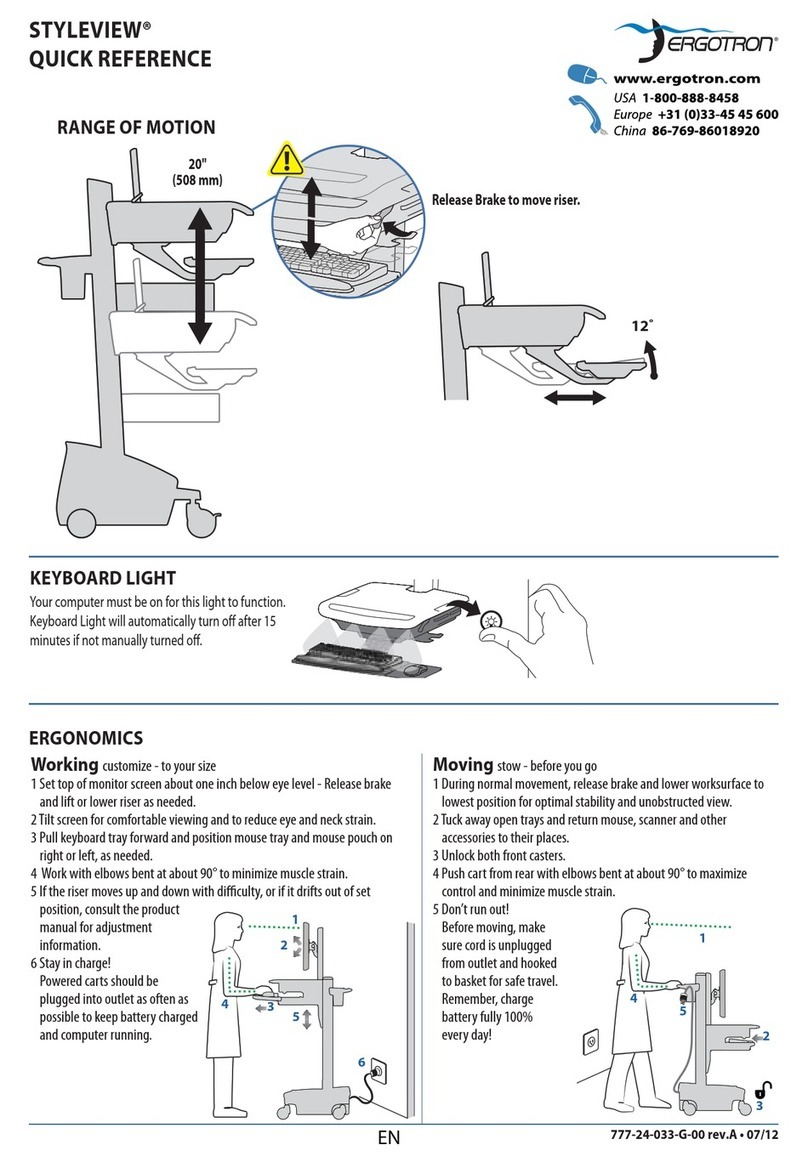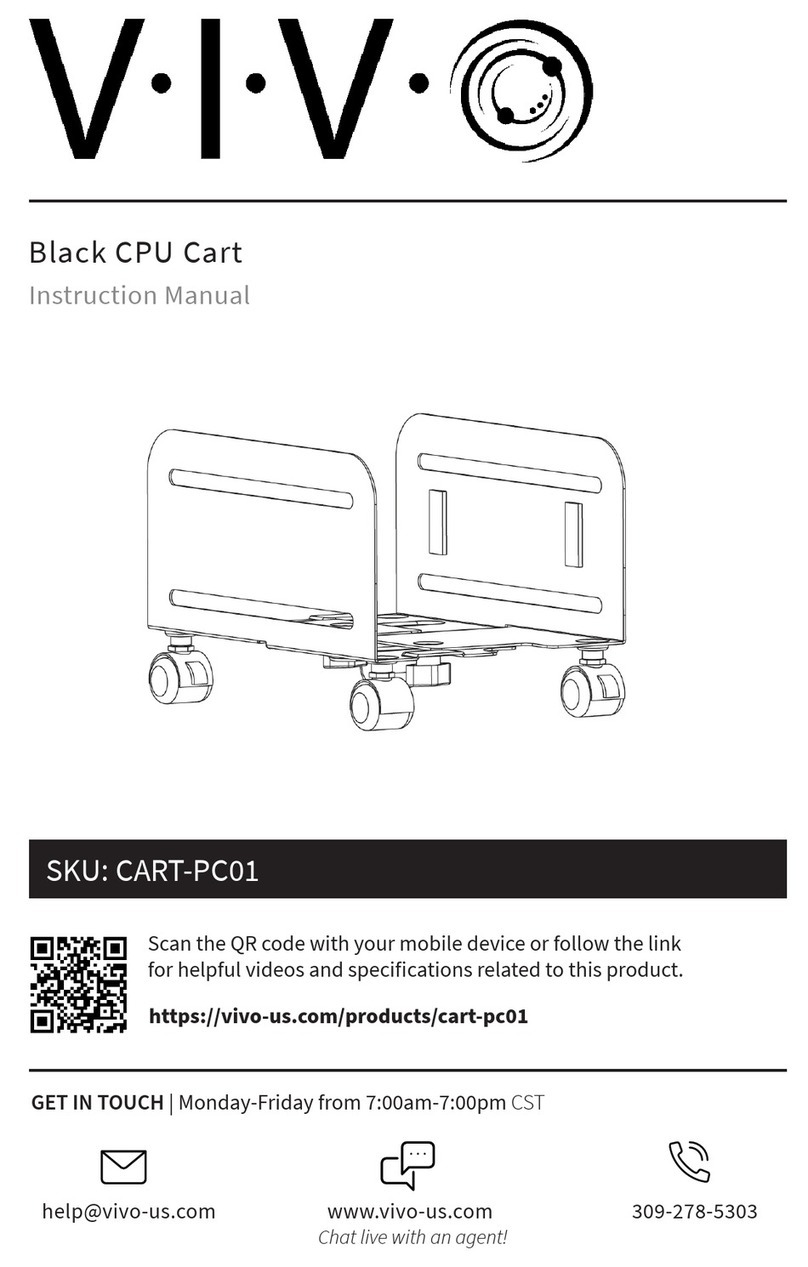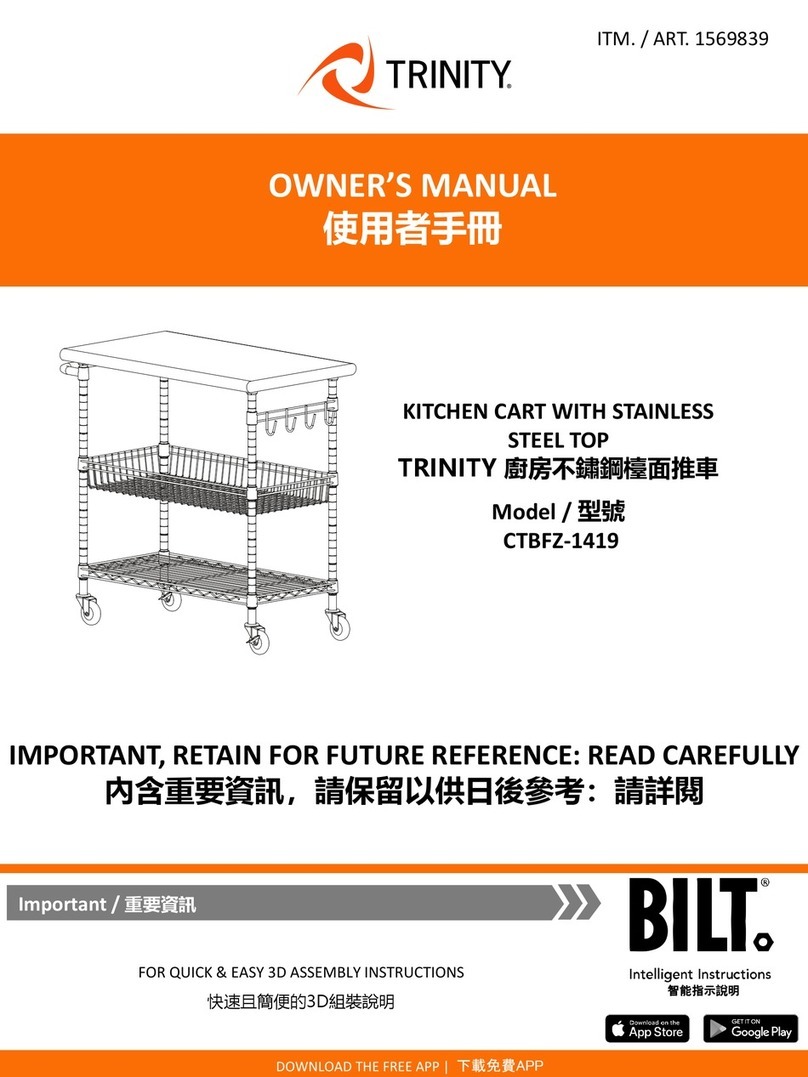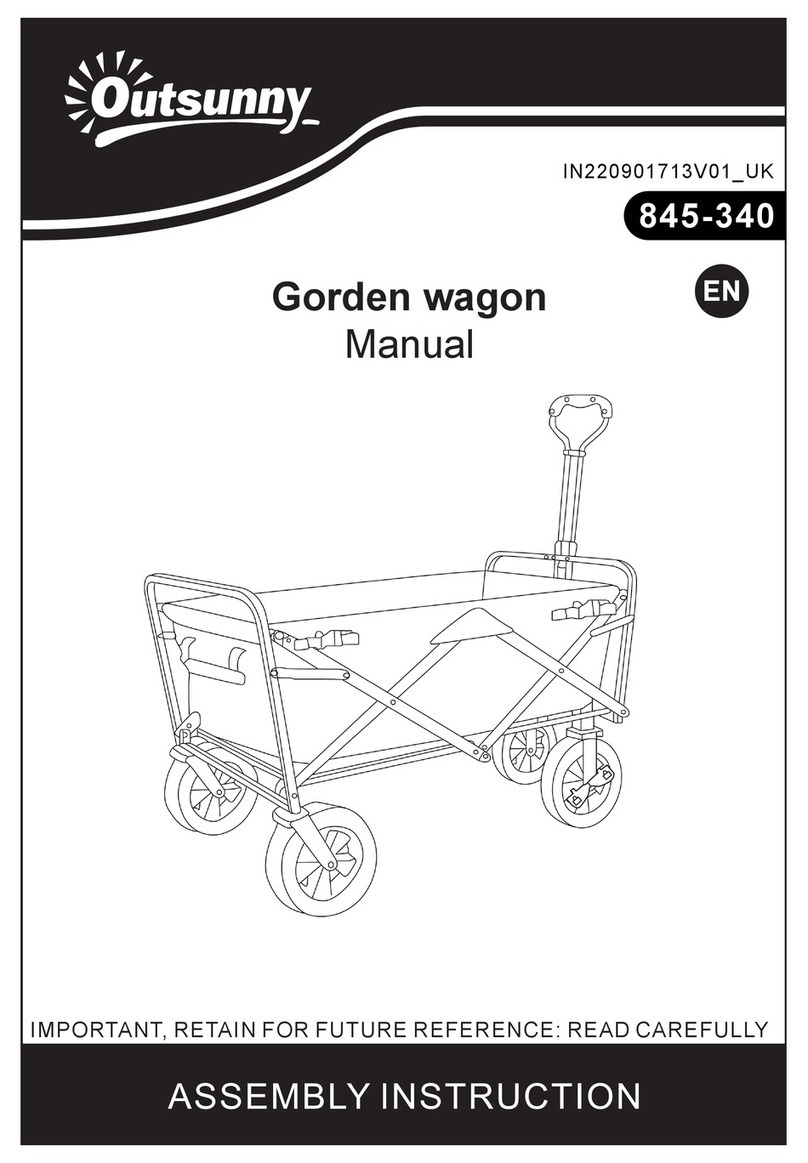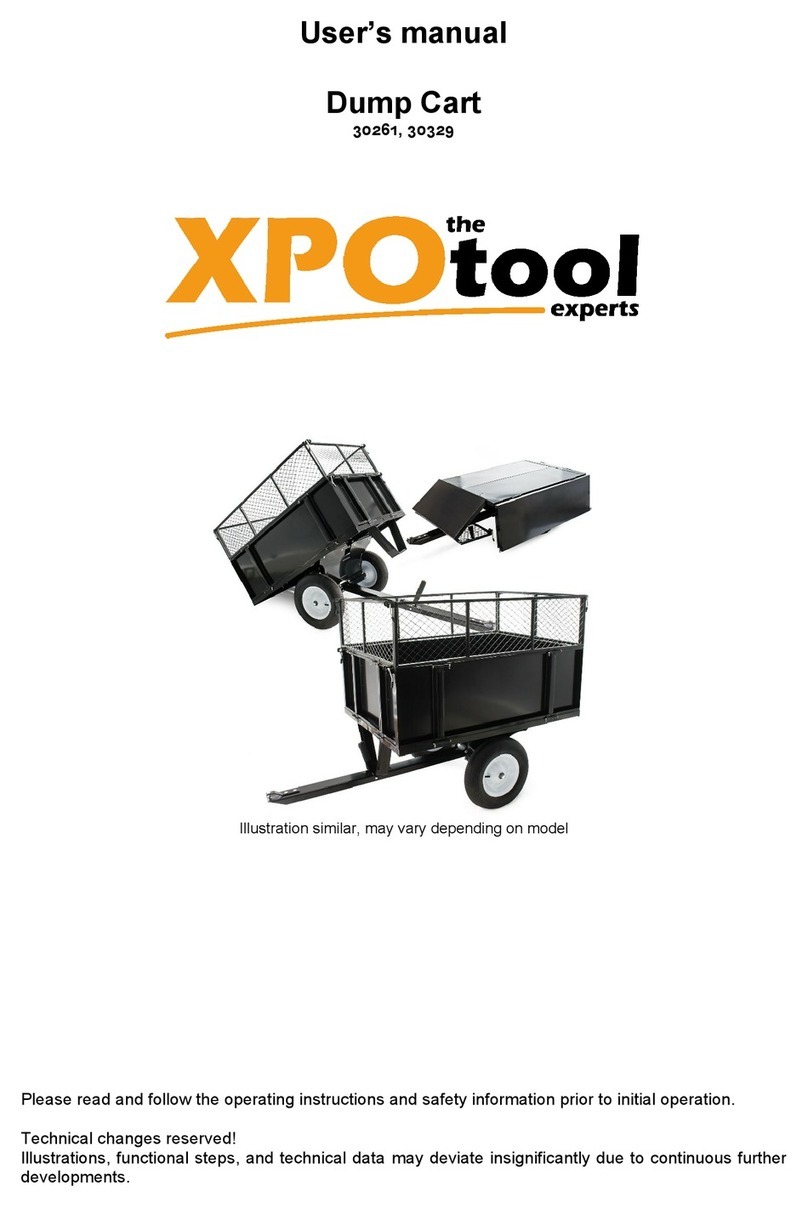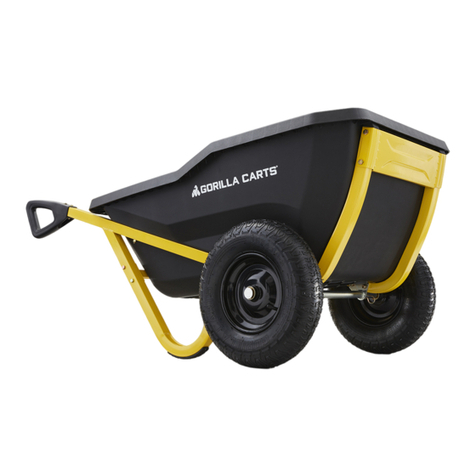
9
For the power supply of the console, the red knob in left hand
side is the power switch. Push on it, power is On. Push on
again, power is off. (See Fig. 14)
5.4 BATTERY LEVEL INDICATOR (See Fig. 15)
LED on battery also shows battery capacity:
1. One LED: 0~40% battery capacity.
2. Two LED: 40%~70% battery capacity.
3. Three LED: 70%~100% battery capacity.
Soft Riding Condition. When the battery is nearly depleted,
a “soft” riding condition can occur. A “soft” riding condition
means the tugger can move forward at lower speed
compared with fully charged battery. When this happens,
turn the tugger back on and drive the tugger under low
speed until you can recharge the battery.
5.5 Forward/Reverse Swtich (See Fig. 16)
Control knob in left hand side. Push upward, tugger driving
direction is forward. Push downward, driving direction is
reverse. It is normal that you engage the tugger after one
second when switch between forward/reverse. This one
second is the protection of electrical system.
Always be alert to the area around your driving path to avoid
hurting people or hitting objects!
Reversing the tugger is allowed only when nothing is being
towed. Do not reverse backwards when towing multiple trailers,
turn forward and make a U-turn!
Always bring the unit to a complete stop before shifting from
forward to reverse or from reverse to forward.
5.6 Accelerator (See Fig. 17)
Use the right thumb to control the accelerator,Slowly push the
accelerator knob to control the driving speed until reach the
desired speed. If the accelerator knob is back to the neutral
position, the controller slows the tugger until it stops.
【WRANING】Never operate at speeds that are not consistent
with operating conditions. Always limit speed to ensure adequate
time for braking in an emergency.
5.7 Turn
It is essential to slow down to a reasonably slow speed before initiating a turn. Use extreme
caution when turning on slanted or uneven surfaces. Occasionally you may find yourself
negotiating a curve or corner too fast and the inner rear wheel starts to lift off the ground. If this
happens, immediately reduce your speed, lessen the steering angle and shift your upper body
toward the wheel that is lifting off the ground.
Always be alert to the area around your driving path to avoid hurting people or hitting objects!
Fig. 14
Fig. 15
Fig. 16
Fig. 17
